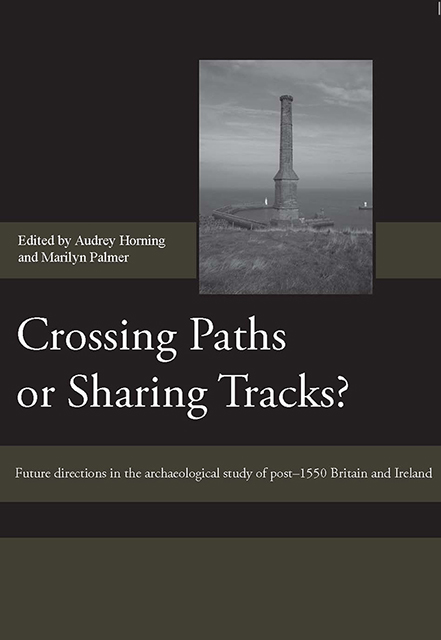 Crossing Paths or Sharing Tracks?
Crossing Paths or Sharing Tracks? Science for Historic Industries – Glass and Glassworking
Published online by Cambridge University Press: 07 March 2023
Summary
The systematic application of scientific techniques to questions relating to industries of the post-medieval and industrial periods is a recent phenomenon. The focus of this chapter is on using materials science to answer archaeological questions. Some commonly used analytical techniques are briefly described, and case studies are used to demonstrate the application of these techniques to archaeological glass and glassworking sites. The problems and opportunities of excavating post-medieval industrial sites are summarised. During this period glass furnaces changed from wood to coal as a fuel, and the form of the structure changed and increased in size. Two contrasting 17th-century glasshouses, at Shinrone and Silkstone, are used as examples of the benefits of scientific investigation of excavated finds. Many diff erent compositions of glass were made during this period, and the changes demonstrate alterations (usually improvements) in quality. For some types of glass a sufficiently large database of analyses exists to permit the composition to be used as a dating tool.
INTRODUCTION
Scientific techniques are regularly used in archaeological investigations of medieval and earlier sites, but their systematic application to questions relating to industries of the post-medieval and industrial periods is a recent phenomenon. There are many diff erent techniques that can be used, running from geophysical prospection and scientific dating methods such as dendrochronology and thermoluminescence, to the range of biological and earthsciences collectively known as environmental archaeology. Here the focus is on materials science, which uses many diff erent physico-chemical techniques to answer archaeological questions, largely by analysing inorganic materials such as glass, ceramics, metal alloys, chemical residues and waste slags.
THE PROBLEMS AND OPPORTUNITIES OF INDUSTRIAL SITES
The upsurge in excavations of ‘brown-field’ sites prior to redevelopment has provided an opportunity to develop existing techniques – both archaeological and scientific – so they are better suited to the large scale of the structures and deposits that are often encountered. There was no history of using scientific investigative techniques in industrial archaeology, although many of the structures and machines that were surveyed and recorded were examples of the application of 18th- and 19th-century science and engineering.
- Type
- Chapter
- Information
- Crossing Paths or Sharing Tracks?Future directions in the Archaeological Study of Post-1550 Britain and Ireland, pp. 117 - 132Publisher: Boydell & BrewerPrint publication year: 2009
- 1
- Cited by


